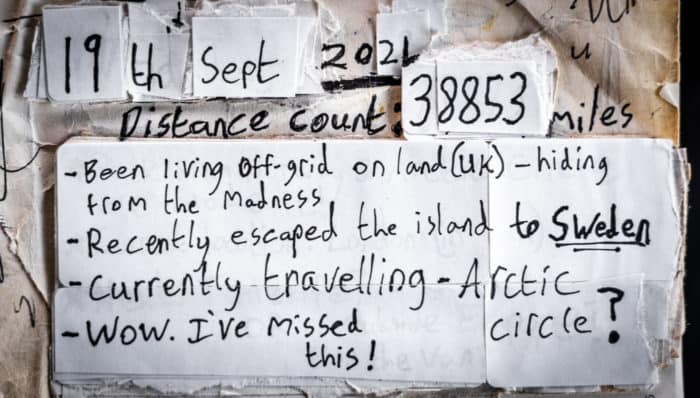Everything in the living space of my van (fridge, computer, lights pump etc.) is powered by 2 big leisure batteries that are charged from the 200W of solar panels on the roof.
But batteries don’t last forever and these batteries are now completely dead. If you live full time in a van, changing the batteries is something you’ll probably have to do at some point. But which ones do you get?
In this post I’ll show you how I chose a new set of leisure batteries and how the more expensive battery might work out to be the cheapest option in the long run.
My old batteries
I have 2x 12V (230Ah each) lead acid maintenance-free Alphaline batteries. I got them second hand (not very good condition) when I converted the van and they’ve hung on all this time.
They’re dead
How do I know they’re dead? As soon as a load is put on them (like the water pump turning on) the voltage drops right down to 10V. A voltage drop is normal when 12V batteries like this are in use but it shouldn’t go below 12V with such a small load. As with all batteries it’s a gradual death from the day you buy them. Mine slowly got worse over the months and I tried to keep them running for as long as possible. But now they are totally unusable.
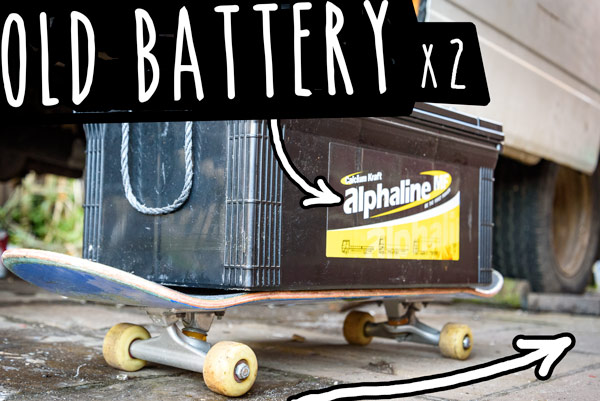
New battery Options
I decided to stick with the same battery technology: flooded lead acid (FLA). That rules out AGM and gel batteries which are out of my price range anyway, plus my charger is primarily designed for lead acid and a slightly different charge voltage and curve is needed.
- Cheap one: Ultra Plus. Cost for 440Ah (2 batteries): £290 – Ebay link
- mid range one: Varta LDF. Cost for 460Ah (2 batteries): £360 – Ebay link
- more expensive one: Trojan T105. Cost for 450Ah (4 batteries): £397 – Ebay link
*The prices seem to vary from month to month
I narrowed it down to two batteries
I ruled the cheap one out straight away just from looking at its weight. It was considerably lighter in weight than the other two which probably means it has a lot less lead inside – thick lead plates are essential for constant cycle use like in a campervan. Cheap batteries are usually cheap for a reason. So I narrowed down my search to two batteries: the mid range Varta LDF230 and the more expensive Trojan 105.
Cost per cycle
Instead of just looking at the base cost of the battery it’s better to calculate the cost per cycle to give you an idea of how much useable life you’ll get for your money.
I divided the amount of expected cycles (taken from the manufactures websites) by the price to get a cost per price. See below
- Option 1: Varta LDF230. 200 cycles @ 50% discharge depth. Cost for 460Ah (x2 units at 230Ah each) = £360. Cost per cycle = 360/200 = £1.80
- Option 2: Trojan 105 225Ah. 1200 @ 50% discharge depth cost for 450Ah (x4 units at 225Ah each) = £397 Cost per cycle = 397/1200 = £0.33
The winner
The Trojan battery is a clear winner. I’d be mad not to spend an extra £40 for something that will last me 5 times longer.
So I bought 4 new Trojan T105 from the Megabatteryuk store on Ebay (link here). I paid £397 including postage. They arrived the next day on a pallet. Great service. Although the price has since gone up – if you voted to leave the EU, it’s your fault.
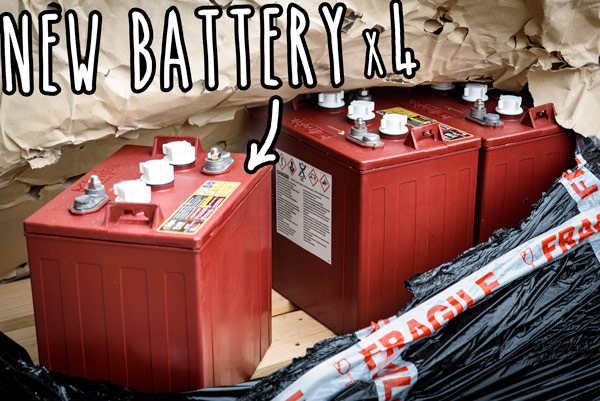
Wire batteries for 12V
The new batteries are 6V each with 225Ah capacity. No need to be put off by 6V batteries. Just wire them as I’ve shown below (in series pairs) and treat a pair as one normal 12V battery. You can have more pairs for more capacity, or just have one pair. The drawing below will give me 12V and 450Ah capacity.
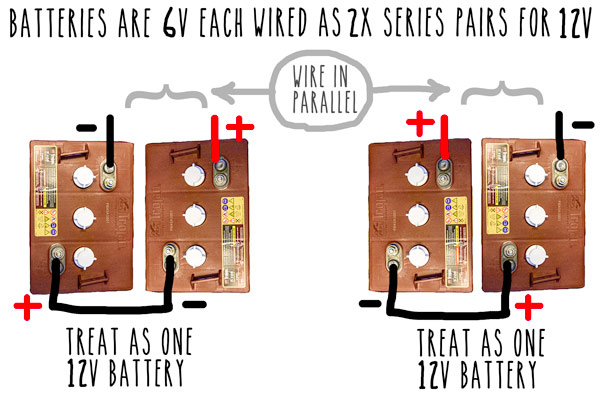
Fitting the batteries
I needed a bit of extra wire and some crimp terminals to make the extra series connections. It took about an hour for the whole battery replacement.
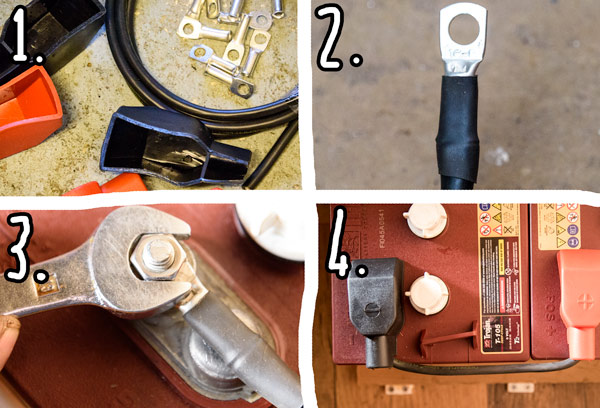
Fitted under the sofabed in my van
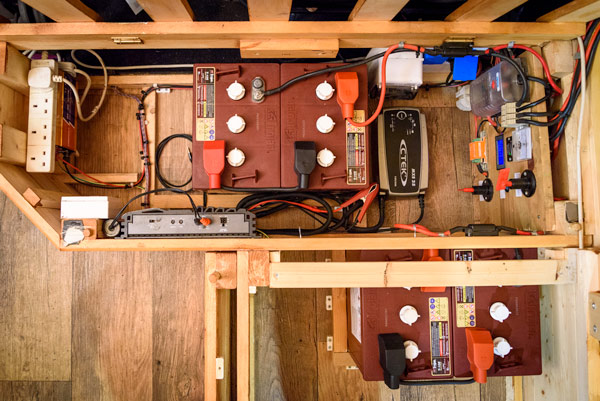
Why I think the Trojan 105 is one of the best FLA batteries
This is not an endorsement of any kind. If you’ve found a better battery let us know in the comments.
- Trojan has excellent customer support. Most batteries are rebranded and it can be really difficult to find the company who made it. I’ve contacted Trojan a couple of times with questions and they reply quickly and are very helpful.
- Batteries come with detailed datasheets giving you all the information you need. Most batteries don’t.
- They are designed to be used in golf buggies and can handle large depths of discharge on a regular basis making them much more resilient than most other batteries.
- Designed to be serviced and maintained. There is nothing special about maintenance-free batteries. It just means that you cannot top them up with water if they ever dry out, and so they’re not going to last as long. I’d rather have batteries I can service and have them last longer, like these Trojans.
- Some people report having had their T105 batteries last for over a decade of regular use. That’s impressive for this kind of battery.
Conclusion
200 cycles at 50% DOD (Varta) is just not enough for a leisure battery. For the amount of materials, the size and the cost of these batteries, I’d expect much more than just 200 cycles.
Has anyone else found any other good batteries? or really bad batteries to avoid? share tips and comments below. And please share if you think others might find this useful 🙂



